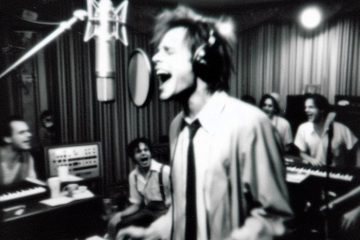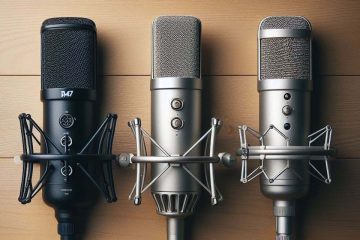If you’re looking for vocal recording tips you’re heading in the right direction. Recording a great sounding vocal is key to releasing music that impacts your listeners and makes them fans. Forget about mics and preamps etc. THIS vocal tip is the real way to get the type of vocals that will get your releases noticed.
What’s The Secret?
Practice.
I know, sounds boring, but you want vocal recording tips that actually work don’t you? Yes, there are people who can walk in and nail a take in an hour. That’s the exception, not the rule. PLUS those people generally have years of practice and experience on their side. They make it look easy and in time you can too.
Serious, Why Should I Bother Practicing?
The first time you try this method it might seem like it takes an unnecessarily long time. Don’t rush this, you’re actually not just setting yourself up for success with the song you’re recording. You’re actually setting yourself up to be a more confident and solid singer in general. This is what makes this the king of vocal recording tips.
This method when repeated regularly will:
- Become an easier and quicker process when recording vocals.
- Teach you how to truly learn a vocal part before you record it.
- Improve your singing in general which will give you killer live performances as a bonus.
- Make you more aware of your “bad habits” and help you to identify and stop them quickly.
- Turn you into a singer who can jump into the studio without a whole lot of preparation time and be able to nail your takes.
Okay So How Do I Practice To Record Vocals?
Glad you asked. I’ll say it one more time. The steps below need to be followed and can’t be rushed if you want to record amazing vocals for your song. In fact I hope you’ll actually enjoy the process and the results.
What You’ll Need
Get a rough mix of the track without vocals that you can practice too. It can even be just a guitar or piano part recorded roughly. Once you have this you’re ready to start.
3 Steps To Nailing Your Vocal Takes
- Get Familiar: Sing along with the track until you know all the lyrics and the melody confidently.
- Make A Map: Start focussing on each section and get a feel for how the energy of each section moves vocally. You don’t want to peak too early or start too weak.
- Drill Down: Once you’ve mapped out the energy of the vocal and have a feel for how the song progresses. Start to focus on each phrase, think about the lyric and the melody. Work to get each phrase tight melodically, energy-wise and sung with the right emphasis for the lyric.
How To Supercharge Vocal Practice
There is a method to implementing the steps above which will increase your practices effectiveness. This comes from principles found in the book “Ultralearning” by Scott H. Young.
Step 1. Getting Familiar With The Song
This should be done in blocks of 25 mins 2 – 3 times per day. Do this until you can confidently sing all the way through.
Warm up for 5 mins, sing the song through at least 3 times and then take a break. Come back in 1 – 2 hours and do it again for another 25 mins. I’d recommend doing this in the afternoon or evening depending on your schedule.
These chunks are practice loops and they are spread out to take advantage of the time in between in which your brain retains more of what you practice. This makes each new practice chunk that bit better which encourages you to persist.
Step 2. Mapping Out The Song
Step 2 should be a practice loop like Step 1 but you won’t be singing the song all the way through.
Sing the first verse, stop, go back and sing it again but this time go into the chorus. Now sing the chorus by itself, go back and sing it again but this time go into the second verse. Repeat the process so you make your way through each section, repeat it but move to the next section.
You’re going into more detail and building a map of how each section should feel energy-wise. This should be getting you performance tight as well as the energy right.
You’ll be ready to move on once you think you’re ready to record and don’t need to do step 3. That’s when you need some feedback. 😉
Step 3. Feedback & Drilling Down
Step 3 is a little bit different in that you’ll find it hard to practice phrase-by-phrase with the recording. At this step you’ll be practicing the individual phrases without the music.
Warm up and sing the song through so you’re in “the zone”. Now sing the song through with the backing and use your smartphone to record yourself singing the song all the way through.
Have a lyric sheet printed out. Listen back to the recording paying attention to each phrase. Mark any phrase that you didn’t nail. Pay close attention to the beginning and ends of phrases. Are you being lazy at the start or finish of a phrase? Any tricky melodic runs that you’re “smearing” and not really singing the notes cleanly on? Any high notes you’re choking on or not committing too?
Without music, start working on those phrases. Slow things down especially if you’re smearing notes. Run over the phrase until it feels like you’re nailing it. Back up and go from the preceding phrase into the “trouble” phrase you’re working on and onto the next phrase.
The idea is to pick out the trouble spots, slow it down, get it right and then start putting it back into the song. This not only means you’ll get the phrase recorded tightly but you’ll also have much more confidence going into the recording session.
Don’t work for more than 25 mins on this at a time. At the end, sing through from start to finish and record it again BUT don’t listen to it. Come back after 1 – 2 hours, listen to the recording you did at the end of last session and start the Step 3 process again.
You know you’re ready to hit the studio when you listen back and smile to yourself because you know you’ve nailed it – all of it.
Confidence When You Hit Record
Recording vocals is very much about headspace and confidence. I’ve worked with singers (including myself) who are nailing it when warming up but as soon as you hit record things falls apart.
Using a structured approach to learning your vocal part as well as drilling yourself gives you confidence. It let’s you get out of your head and into the song. This will allow you to really engage with the song’s energy and the lyric because the technical stuff is taken care of.
Getting into this detail also means you can “zoom out” in the recording process because you know your way consciously and subconsciously through the song. Whether you’re recording whole takes, going section by section or taking individual phrases you will feel comfortable with each approach.
An added bonus is you’ll be so tight with the vocals you’ll find the song easier to sing in a live situation meaning your live gigs will be 🔥. You’ll definitely want to video yourself tracking and doing a live version for social content too. It will sound amazing.
Method = Mastery
With anything you want to get better at you need a method to systematically break down the skill, learn it’s elements, get feedback and then put it together to help you master it. This is what I’ve tried to do with the above based on the research and experience of others who have succeeded learning skills to an advanced level in this way.
I’ve tried this method myself for my own songs and it works. It not only works, it makes sense. I found it really helps you engage with the songs you sing on a deeper level which draws out more emotion and impact whilst nailing the execution.
Let me know how you go with this method in the comments below. I’d love to hear your successes or ways you’ve modified it to work for you.
As always, all the best with your music making.
Photo by Jeffery Erhunse



0 Comments